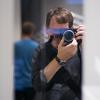SL2-S rolling shutter examples - could Leica warn about it?
-
Recently Browsing 0 members
- No registered users viewing this page.
-
Similar Content
-
- 3 replies
- 276 views
-
- 9 replies
- 586 views
-
- 319 replies
- 40,371 views
-
- 10,972 replies
- 1,200,717 views
-
- 24 replies
- 1,834 views
-



Recommended Posts
Join the conversation
You can post now and register later. If you have an account, sign in now to post with your account.
Note: Your post will require moderator approval before it will be visible.